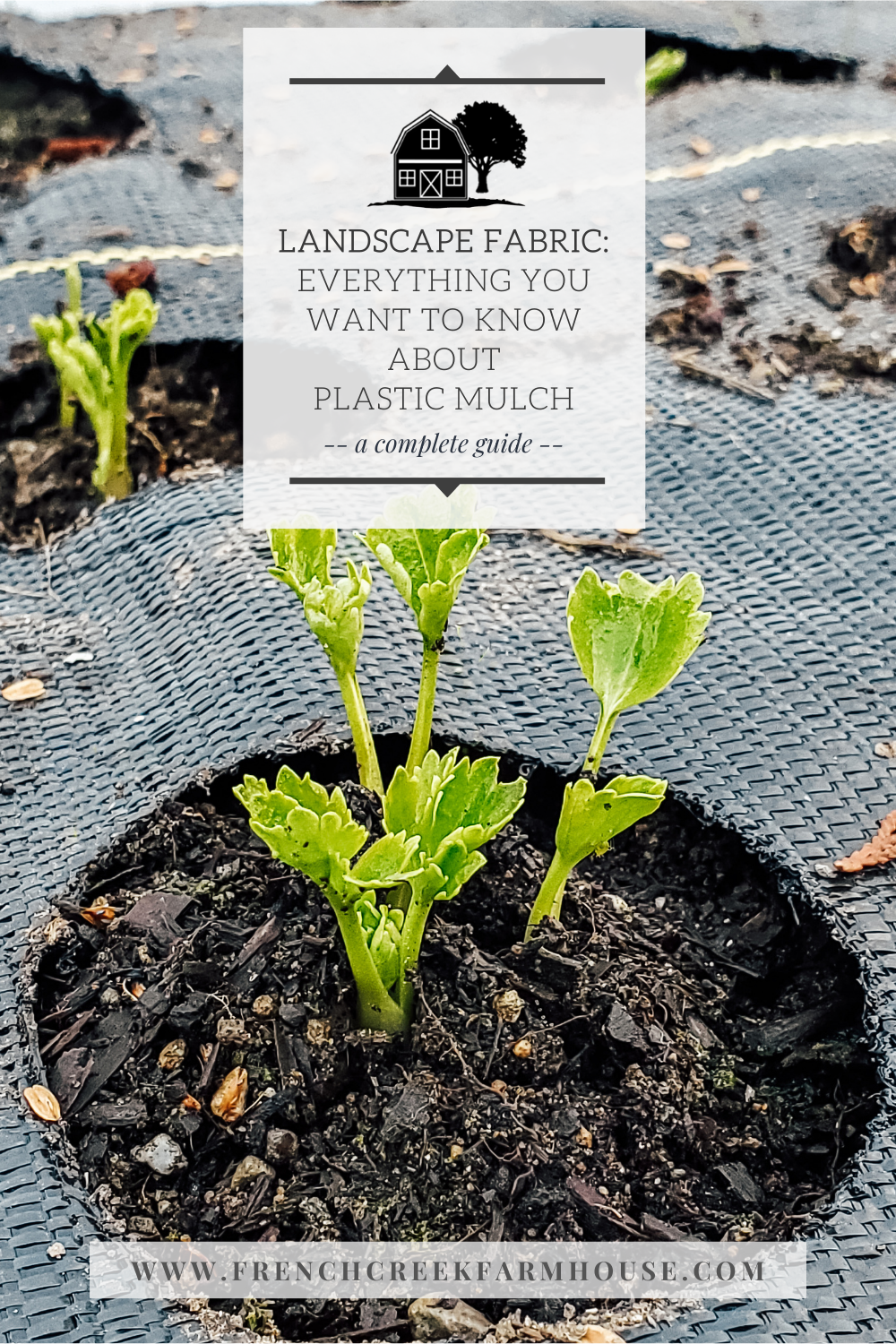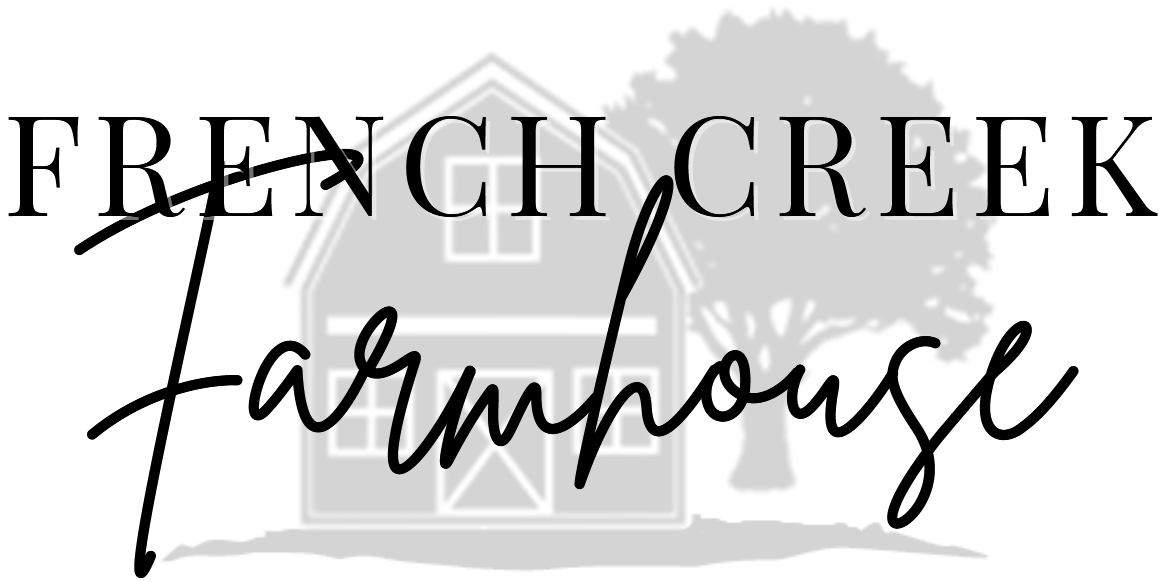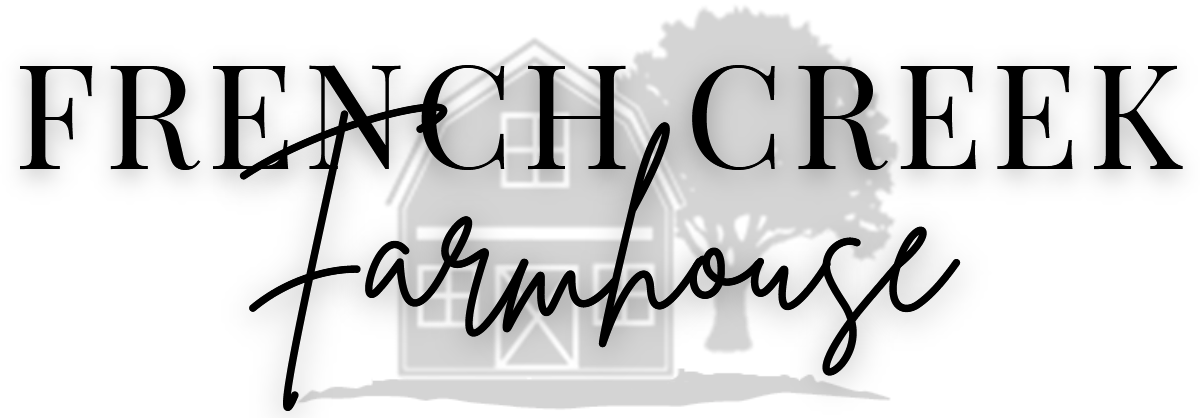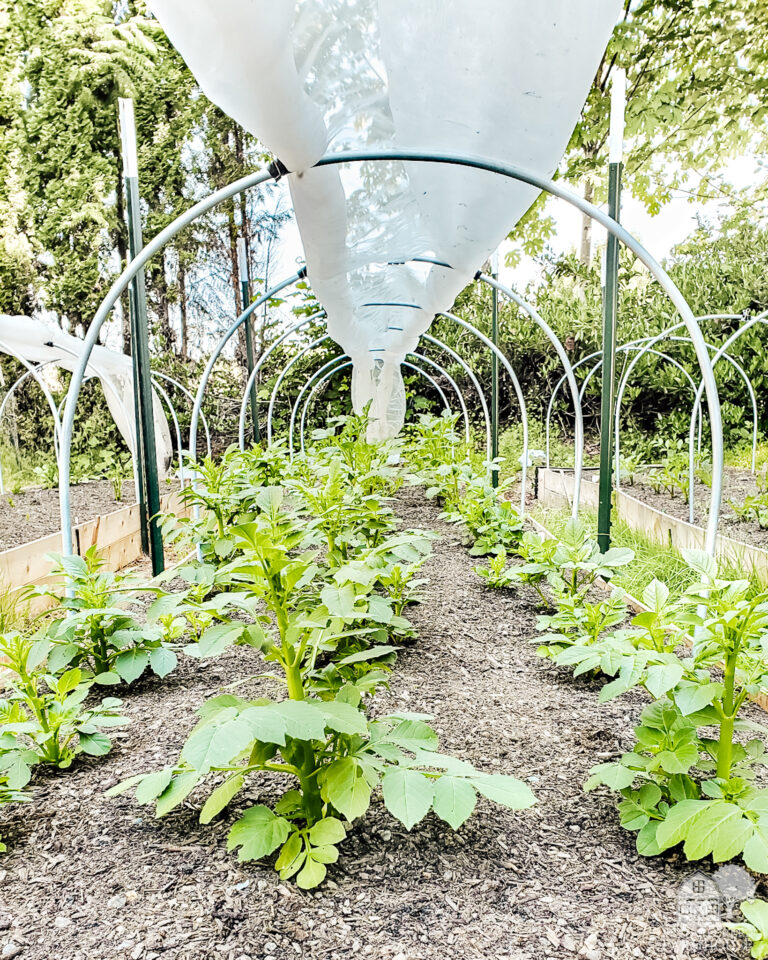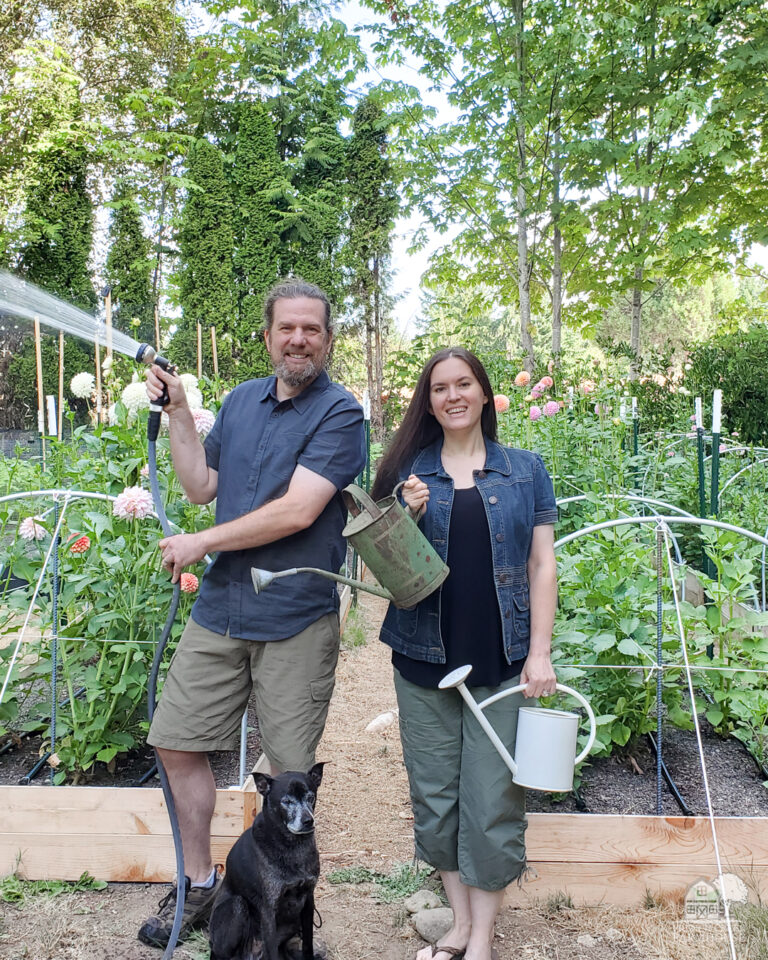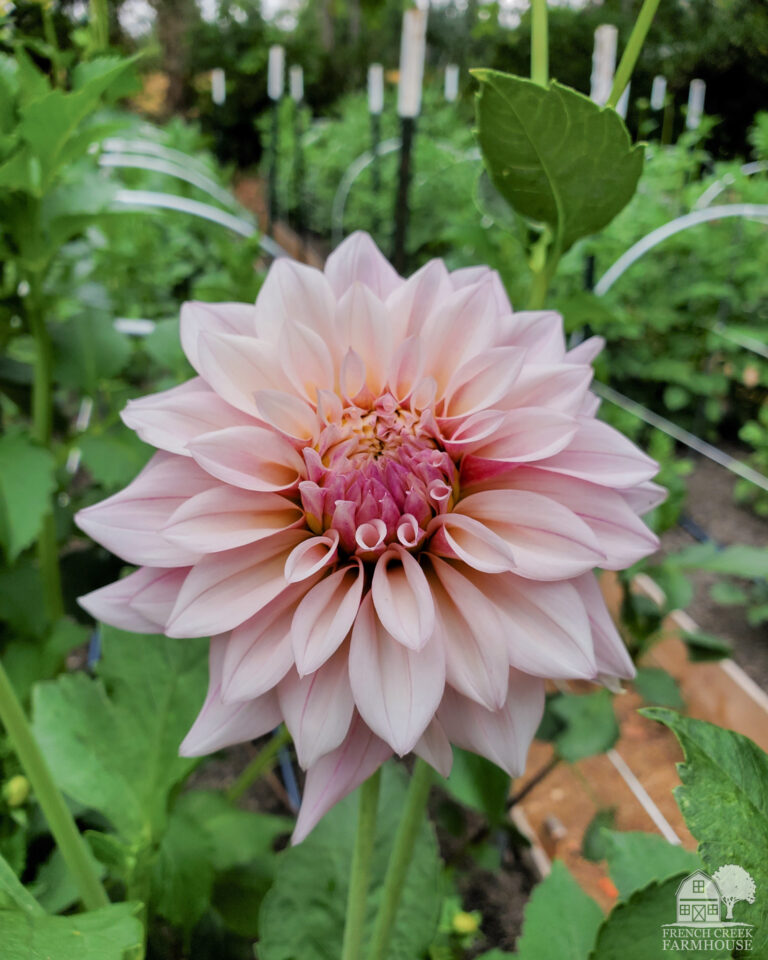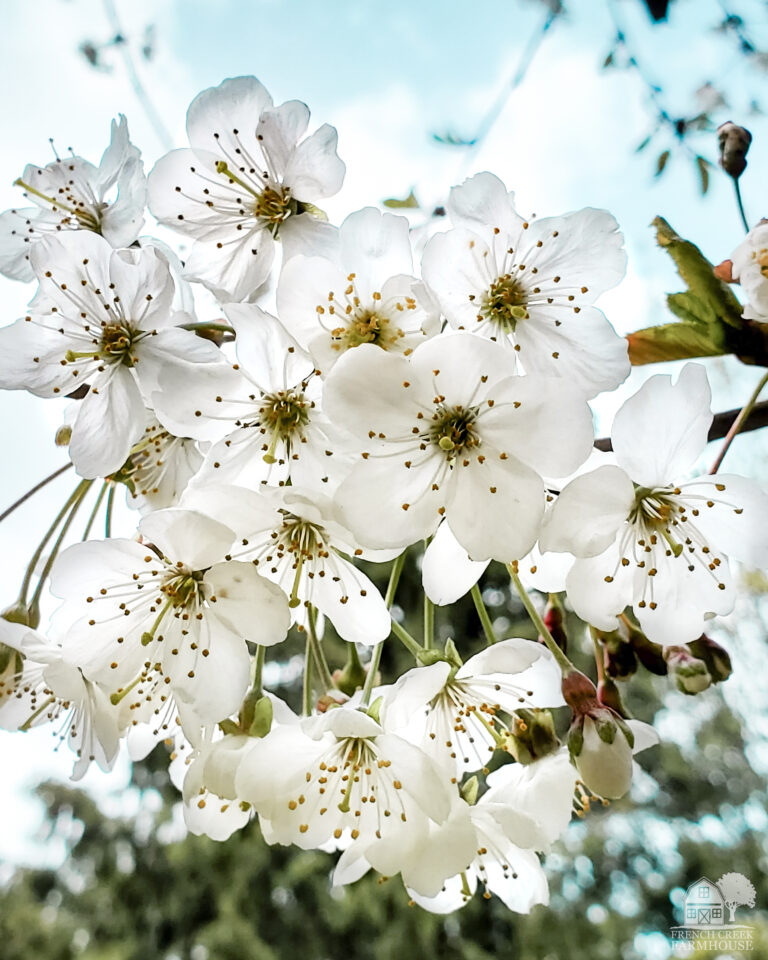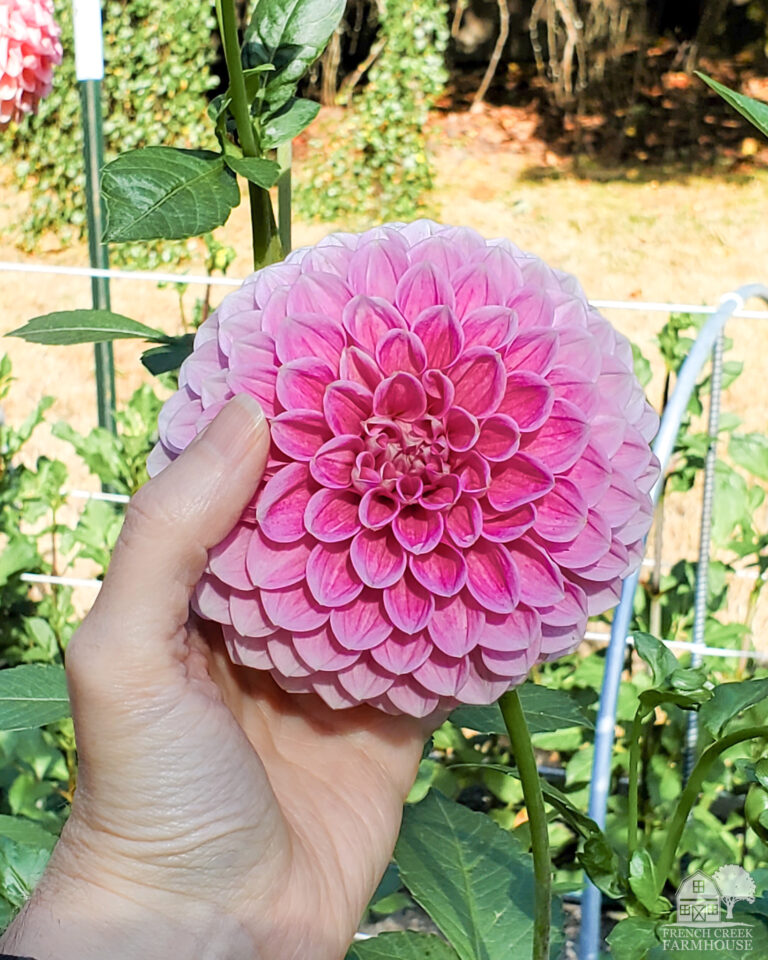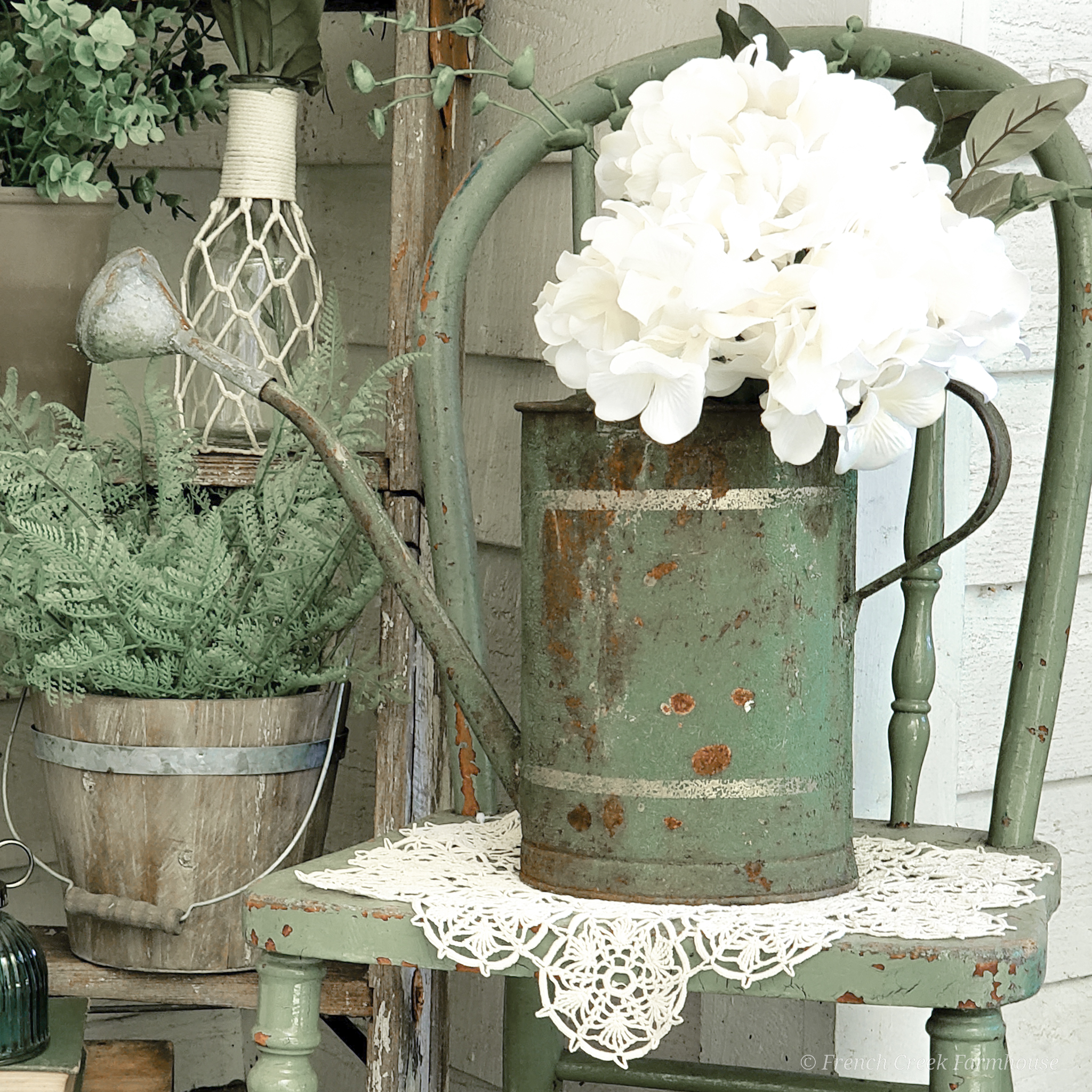Landscape Fabric: What It Is and How It Will Help You Grow More
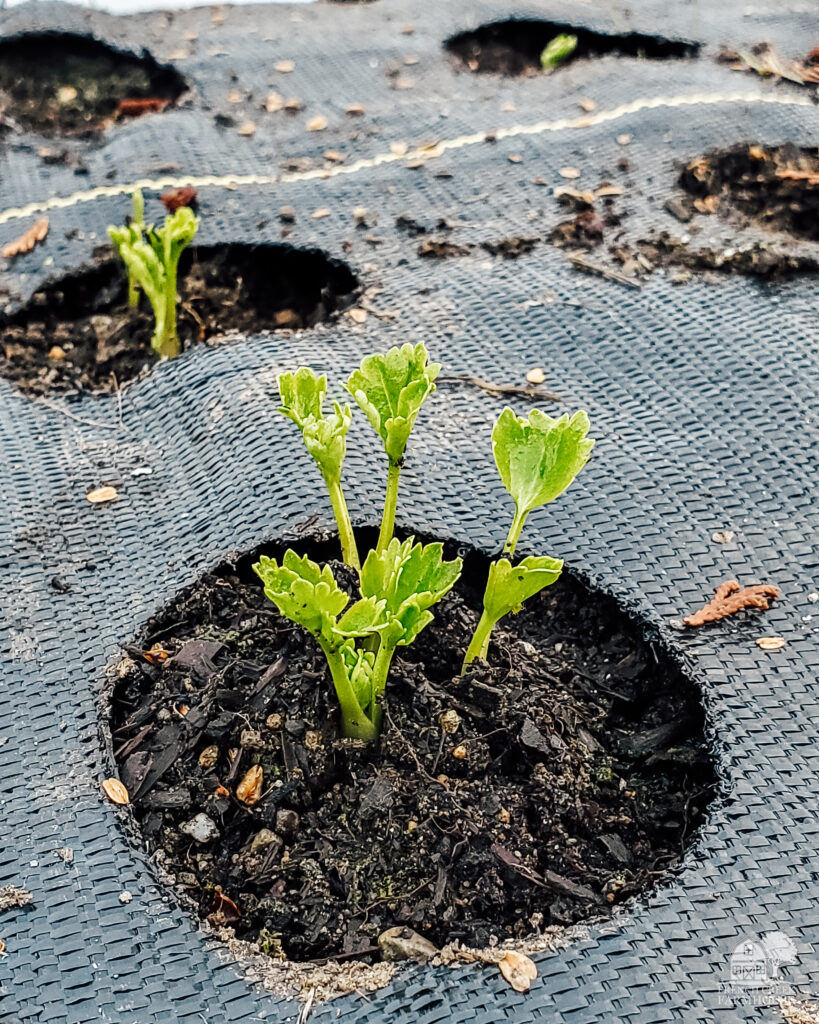
Landscape fabric, sometimes called “plastic mulch”, might just be the biggest difference-maker to your farm or garden this year. On our own farm, it has been an absolute game-changer. However, it’s not the right solution for every situation, either. Knowing what exactly landscape fabric is, when it could help you, and when it could be a hindrance, will help you make the best decisions for your growing experience.
Let me preface this by saying that I’m not exaggerating in the slightest when I say that we could not grow on the scale that we do without landscape fabric. We simply would not have enough time to manage weeds and do all the other tasks our farm requires.
We recently walked through the entire process of prepping our beds and planting into landscape fabric in the episode below. If you’ve never seen plastic mulch in action on a farm, this is one to watch!

Click here to subscribe to our channel, and never miss an episode!

Disclosure: This is not a sponsored post, and I have received no compensation for sharing anything that follows. Some links within this blog may be affiliate links, and I might earn a commission if you make a purchase through that link. This usually amounts to cents, not dollars, and helps to support the projects featured on this blog. I only recommend products from companies that I have found to be trustworthy. Read my full disclosure here.

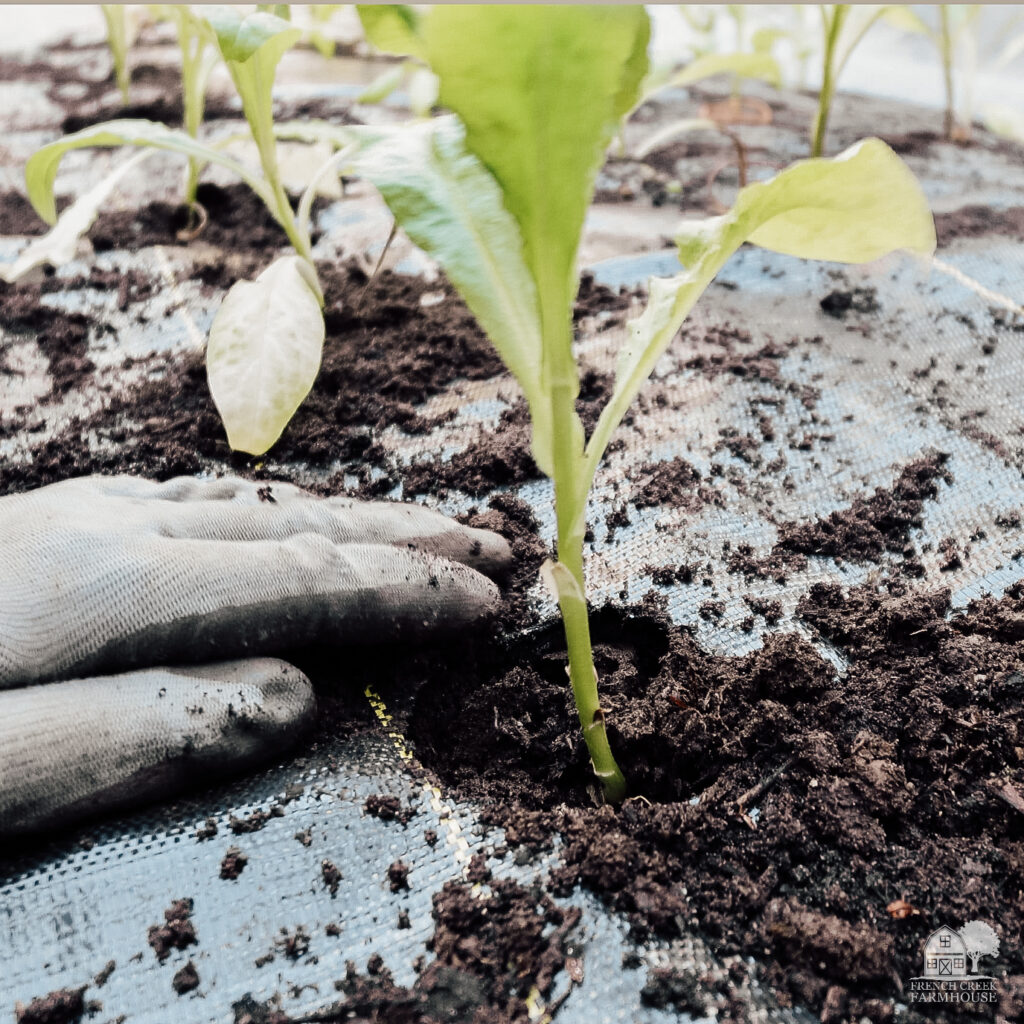
Understanding Landscape Fabric: What It Is and Why It’s Useful
Let’s begin by covering the basics. Landscape fabric, also known as weed fabric, weed barrier, or plastic mulch, is a synthetic material widely used in gardening and landscaping to suppress weeds, conserve moisture, and improve overall garden health. While it’s not a magical solution to all your gardening woes, understanding how it could help you (as well as the limitations) is crucial for effective use.
What is Landscape Fabric?
Landscape fabric is typically made from woven or non-woven polypropylene, a durable and permeable material. It comes in rolls of varying widths and thicknesses, allowing growers to customize its use according to their needs. Unlike plastic sheeting, the fabric is designed to allow water, air, and nutrients to penetrate the soil while also blocking the growth of weeds. Pretty ingenious, right?!
Let’s talk about the various types of plastic mulch so you can get an idea of what might be right for your growing situation.
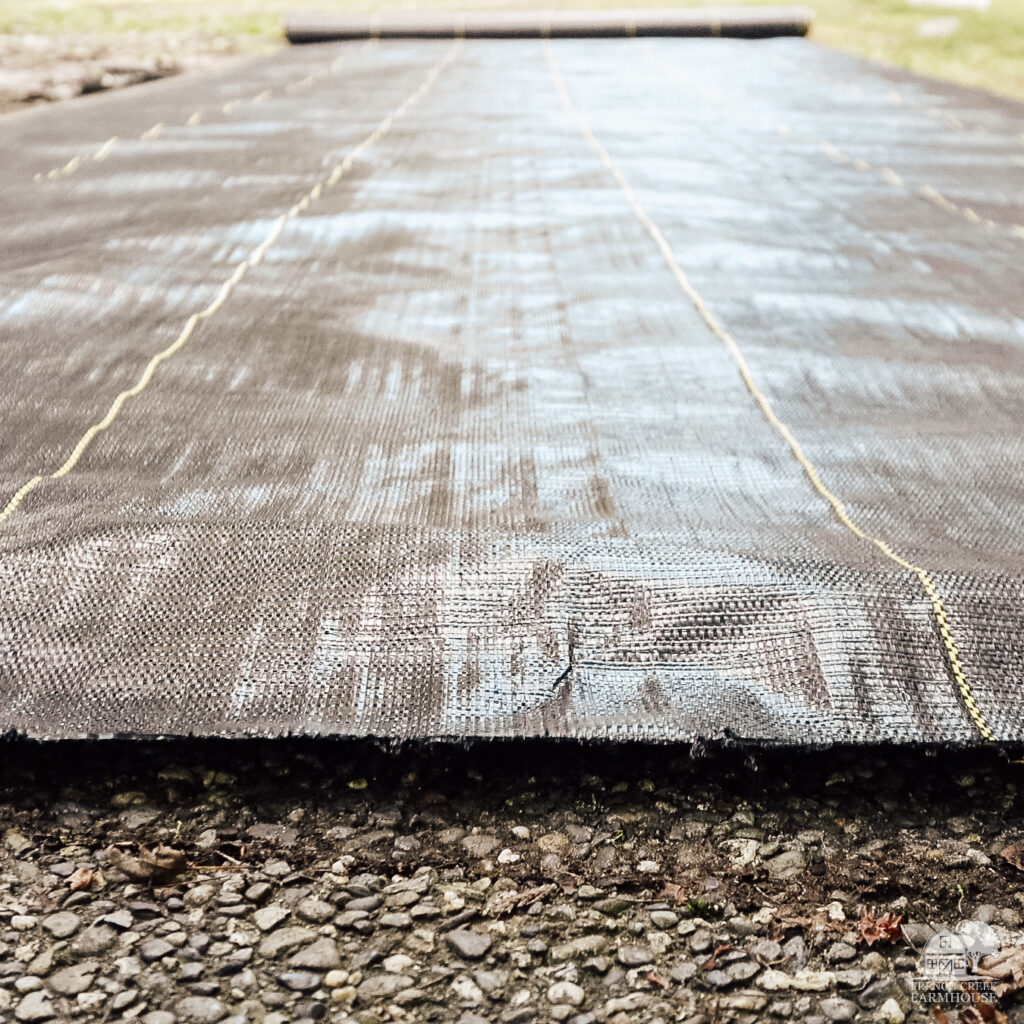
Woven Landscape Fabric
Woven landscape fabric is what gardeners and farmers use to grow flowers and vegetables while suppressing weeds. Because the strands of polypropylene are woven, it creates a semi-permeable fabric that allows some water to reach the soil but discourages weed growth from below.
The type of landscape fabric that we use exclusively on our farm (HERE) is a 3.2 ounce polypropylene woven fabric. It’s available in several different widths and lengths, but we typically utilize the 6′ width because it nicely covers a 4-ft bed, as well as the walkways between rows. It’s also striped every 12″ which makes it very easy to neatly align your plant spacing.
What’s also great is that it resists UV damage, and it will last a very long time. I know farmers who have used the same fabric for over and over for a decade or more! This is important to us because we’re very mindful of plastic waste on our farm. Making an investment in a high-quality landscape fabric that you can use for 10 to 20 years means less plastic waste, and less money spent in the long run.
Non-Woven Landscape Fabric
Non-woven landscape fabric is best for preventing weed growth in areas like rock path. Because it’s less permeable than woven fabric, it prevents water and nutrients from reaching the ground below it. This makes it a good choice under gravel, rock, or pavers because it helps to prevent the stones from sinking into the ground over time.
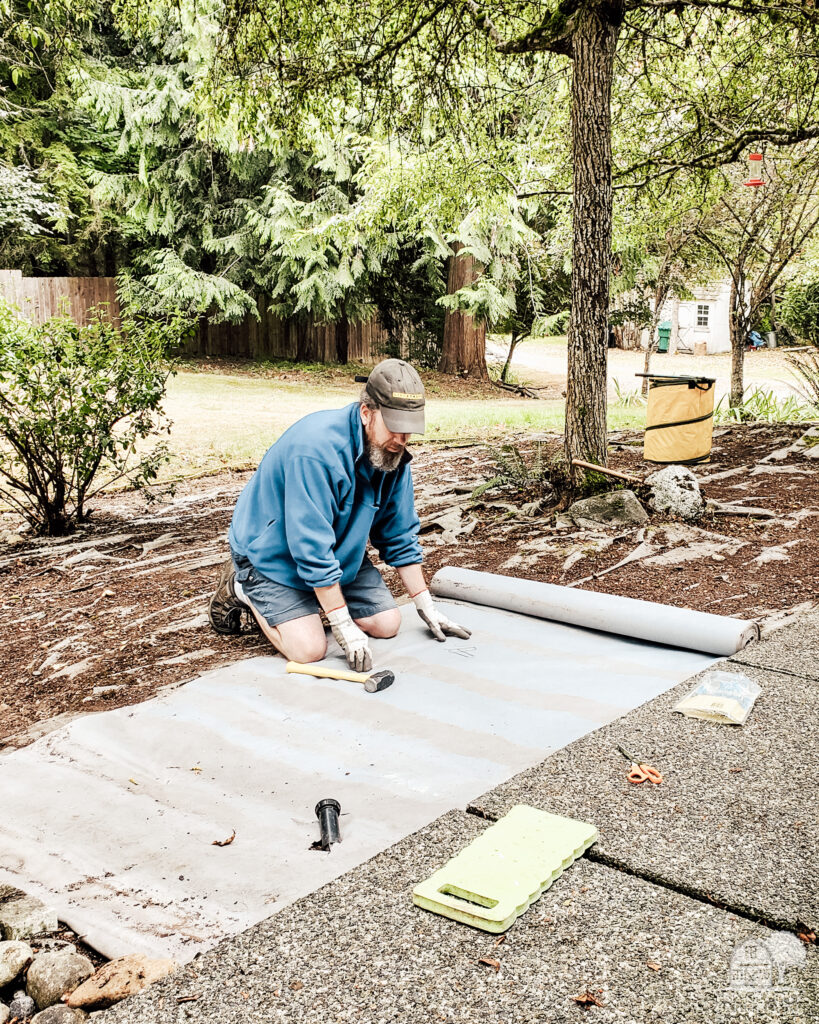
Spun Polyester Landscape Fabric
You can also use landscape fabric that’s made from spun polyester fibers. This is an extremely durable product that allows water to permeate to the soil below, but thoroughly prevents weed and grass growth. This type of landscape fabric is a good solution for landscaping beds or under walkways. However, it’s not ideal for growing cut flowers or vegetables because it’s much more expensive, and it’s harder to burn holes into without causing unintentional melting and distortion.
We used spun polyester landscape fabric in the landscaping beds we created around our home (HERE), and we have not had to do any weeding in more than two years. The downside, of course, is that you won’t be able to easily add annuals and bulbs because it would mean cutting a hole into the fabric for each plant. However if you have a well-designed landscape bed with specific areas designated for annual plantings versus the shrubs and perennials that will be in place year-round, it can be a terrific solution for low-maintenance landscaping.
{ Related: How We Created New Landscaping Beds }
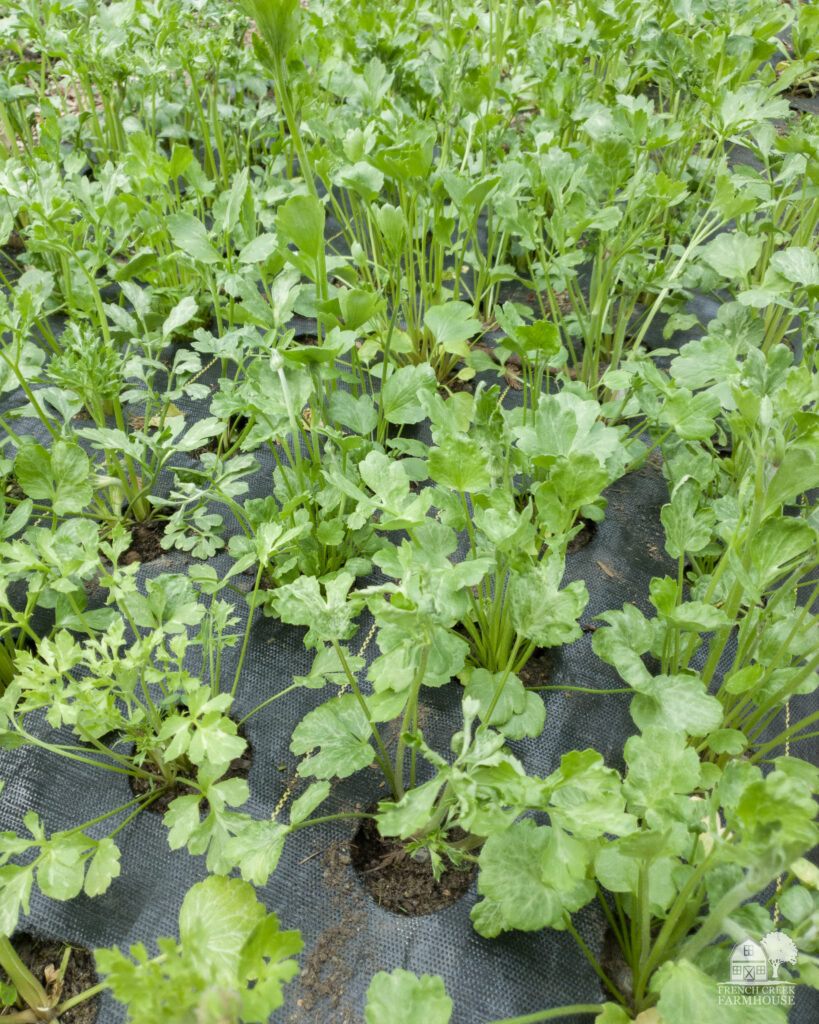
Advantages of Using Landscape Fabric
Okay, this is probably obvious, but the main advantage of landscape fabric to address most growers’ immediate concern is, of course, weed suppression. That said, there are other factors to consider that make landscape fabric an excellent investment for home, hobby, and market growers. But let’s start with the big one…
1. Weed Prevention
The primary benefit of landscape fabric is its ability to suppress weeds by blocking sunlight, which prevents weed seeds from germinating and growing. This reduces the need for manual weeding and minimizes competition for nutrients and water among plants.
Also, I can’t say enough about the amount of time you’ll save by not having to manage weed pressure in your beds. I cannot say it enough, but to make your farm successful, you have to protect your time! It is truly your most precious commodity, so finding efficiencies–like with plastic mulch–really matters.
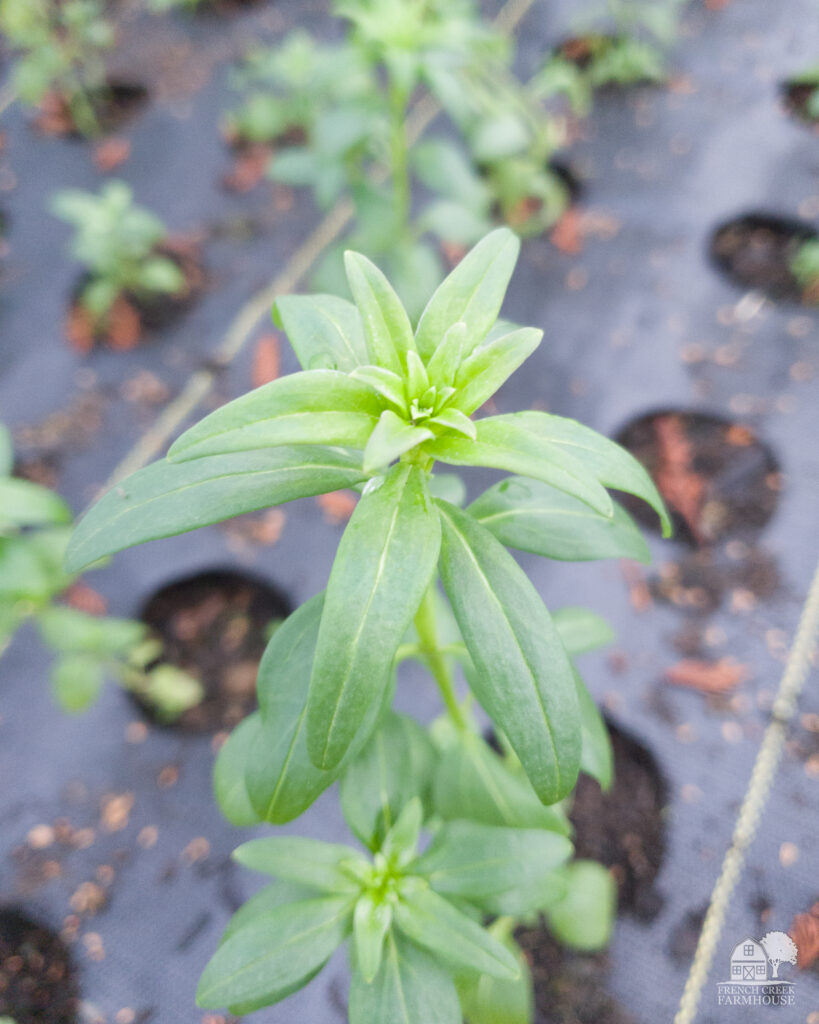
Now, don’t misunderstand me–there’s still going to be some work to manage weeds. Landscape fabric is not going to prevent 100% of weed growth. But picking a single weed from where it popped through a 3″ planting hole is an entirely different ball game from weeding a 4′ x 50′ open bed.
Many growers fail to calculate the cost of their time when they make considerations about where to invest in their farm or garden. While it might feel tough to devote part of your budget to something like landscape fabric, if it means you can grow exponentially more because you have more time to tend to your plants or sell veggies/bouquets rather than pick weeds, then it more than pays for itself in the first season.
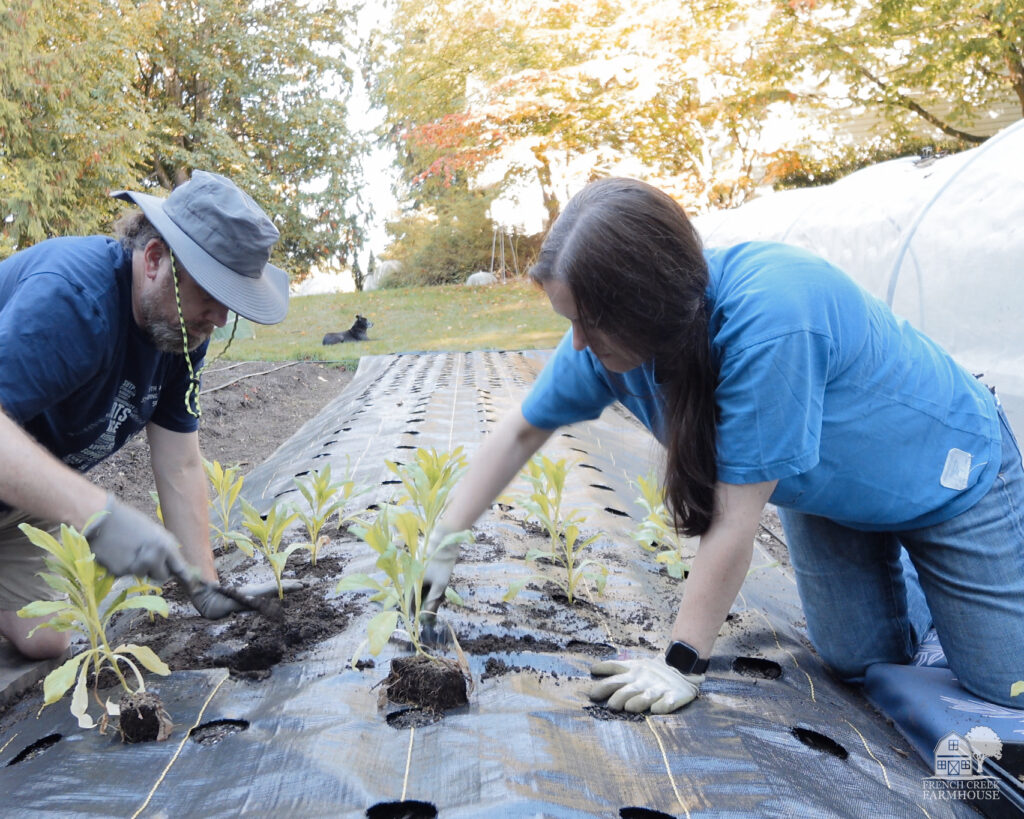
2. Water Conservation
Speaking of precious commodities when it comes to growing, we have to talk about water usage. If you’re irrigating with municipal water, you’re paying for every drop! But even if you use a well or surface water, there is a cost in pumping that water–whether you’re using electricity, gas-powered pumps, or even investing in solar. So making sure your watering efforts aren’t being wasted really does matter to your bottom line.
Landscape fabric helps to conserve moisture by reducing evaporation from the soil surface. This is especially beneficial in hot and dry climates or during periods of drought, as it helps plants maintain adequate hydration.
But, I’ll tell you what, even here in Washington state, we have water issues. As climate change advances, we’ve been seeing longer, drier growing seasons. And, even when we’re growing during the shoulder seasons, if our crops are staying protected under tunnels, we have to irrigate. And that equals an expense that we must carefully manage, so landscape fabric helps us do that.
{ Related: How We Protect Our Groundwater on Our Farm }
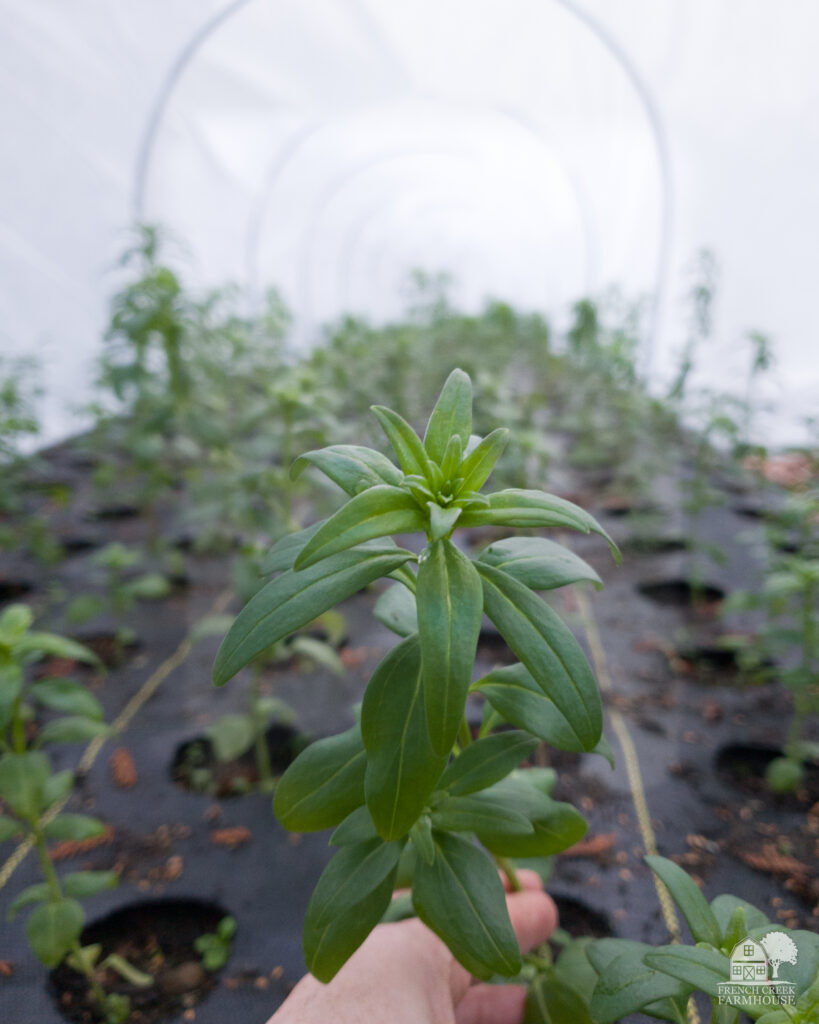
3. Erosion Control
If you’re serious about growing, you are bound to become a bit of a nerd about soil health. I often forget that not everyone pays as much attention to dirt as I do. I’m only reminded when our family friends look at me with glazed-over expressions while I talk about sandy loam.
Landscape fabric can help to improve soil structure by preventing both erosion and compaction. Like I mentioned above, by providing a protective barrier, it helps soil better retain moisture, and that prevents soil particles from being washed away by rain or irrigation.
We spend a whole lot of money on nurturing our soil because it is essential to plant growth. We certainly don’t want that healthy soil to blow away with the wind or wash away in the rain!
{ Related: How We Use Soil Blocking on Our Farm }
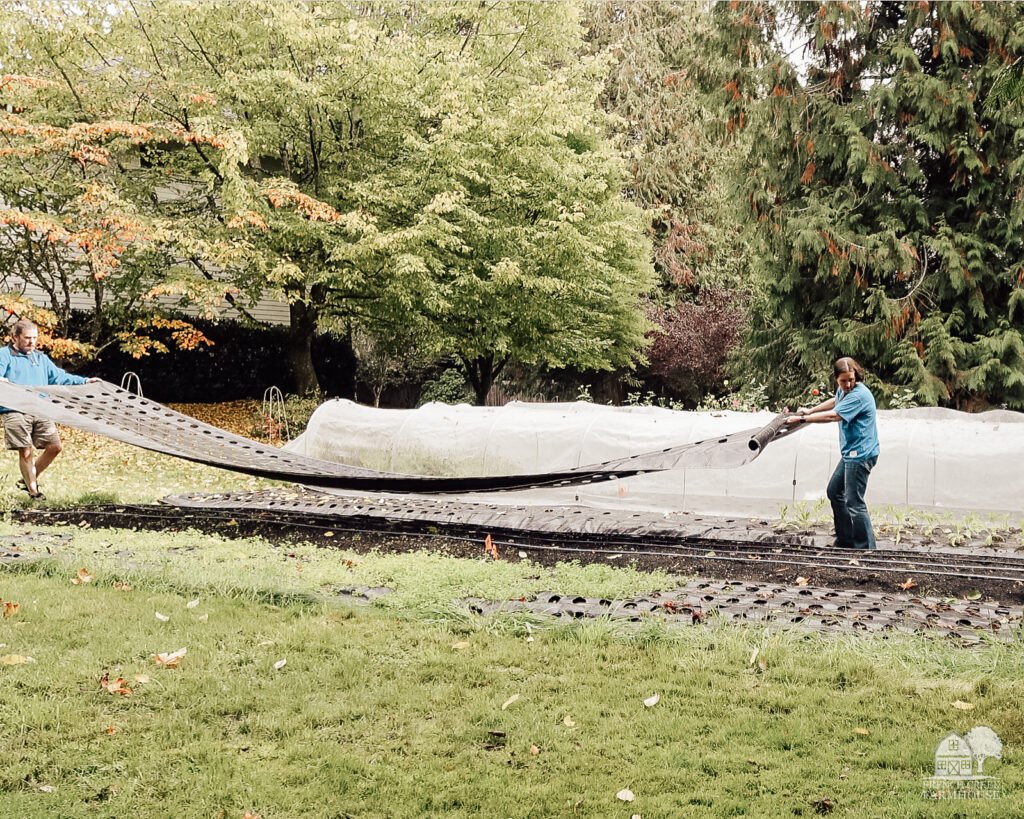
4. Temperature Regulation
One aspect about landscape fabric that’s often overlooked is its impact on soil temperature. But let me caution you that this can work to your advantage, or create quite a headache. So you need to really consider what you’re trying to achieve in your individual situation.
How Landscape Fabric Retains Heat
In cooler climates or during early spring, landscape fabric can help warm the soil by trapping heat. Dark-colored fabrics, which are the most common types available, absorb sunlight during the day and help to retain heat, creating a slightly warmer micro-climate around the plants. This is particularly beneficial for crops that prefer warm soil, such as tomatoes, peppers, and melons.
Now, that obviously means that plastic mulch can create an environment that’s too hot, as well. My best advice to you is to trial it and find out which of your plants love it, and which suffer from it.
Several years ago, we planted our dahlias into landscape fabric thinking that, well, dahlias are heat-loving plants. They’re native to Mexico, for goodness sake! While, yes, that’s true, they also don’t like it to be too-too hot either, and the fabric reflected the heat of the midday sun back up to the plants causing them to seriously droop every afternoon.
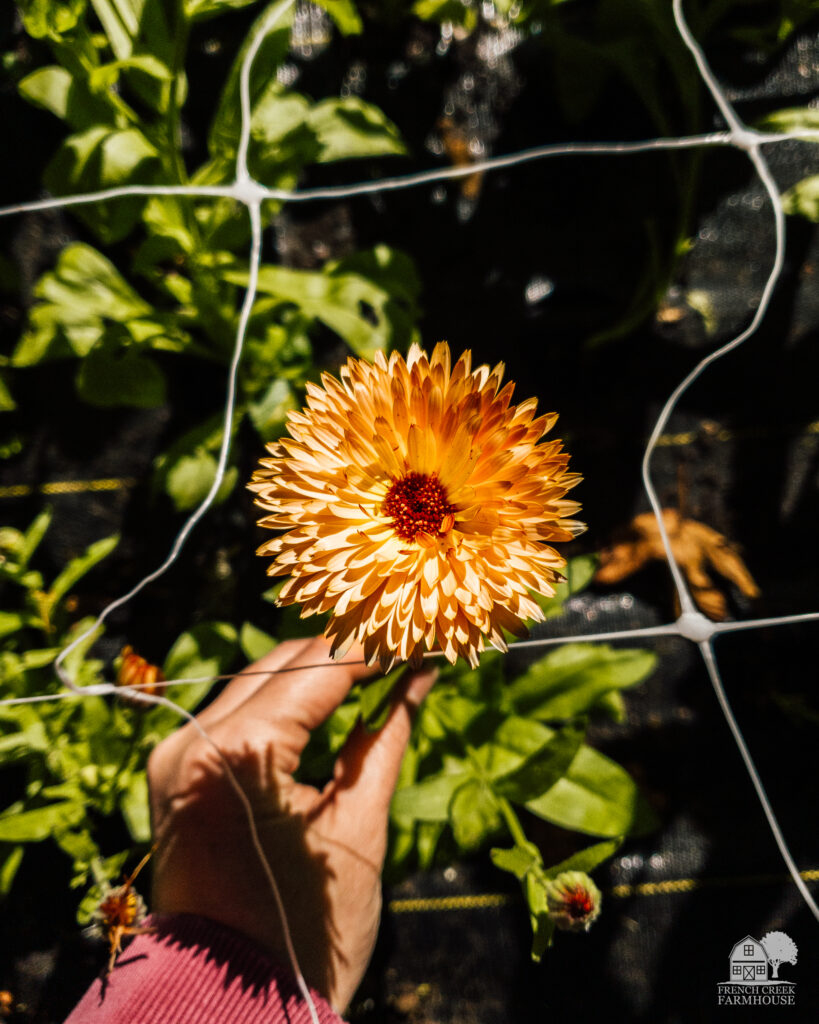
On the flipside, we always grow our zinnias and snapdragons in landscape fabric because both of those crops thrive in the heat.
Likewise, if you’re trying to extend your growing season, that extra heat can make a seriously positive difference. By maintaining a higher soil temperature, landscape fabric can promote earlier germination and faster root development, giving plants a head start on the growing season.
{ Related: How to Have a Four-Season Farm }
Plus, at night, landscape fabric helps slow down heat loss from the soil, reducing the risk of cold stress on plants. This is especially useful for early plantings, as fluctuating temperatures can stunt growth or even damage young seedlings.
As you can see, there are certainly fantastic use cases for utilizing landscape fabric to warm up your soil and create a cozy micro-climate for heat-loving plantings. But wait, there’s more!
Preventing Overheating in Hot Climates
As we experienced using landscape fabric with our dahlias, heat retention is very beneficial in cooler months, but it can become a problem in hot climates or during the peak of summer. If soil temperatures get too high, plant roots can become stressed, leading to reduced growth and lower yields.
But there’s good news! You can prevent overheating by using a light-colored or reflective mulch over the fabric. Some growers place straw, wood chips, or another organic mulch on top of the fabric to reduce direct sun exposure while still benefiting from the weed suppression and moisture retention properties of the fabric. There are pros and cons to this approach of course, but the bottom line is that it does mean there are ways to mitigate overheating while still benefiting from landscape fabric.
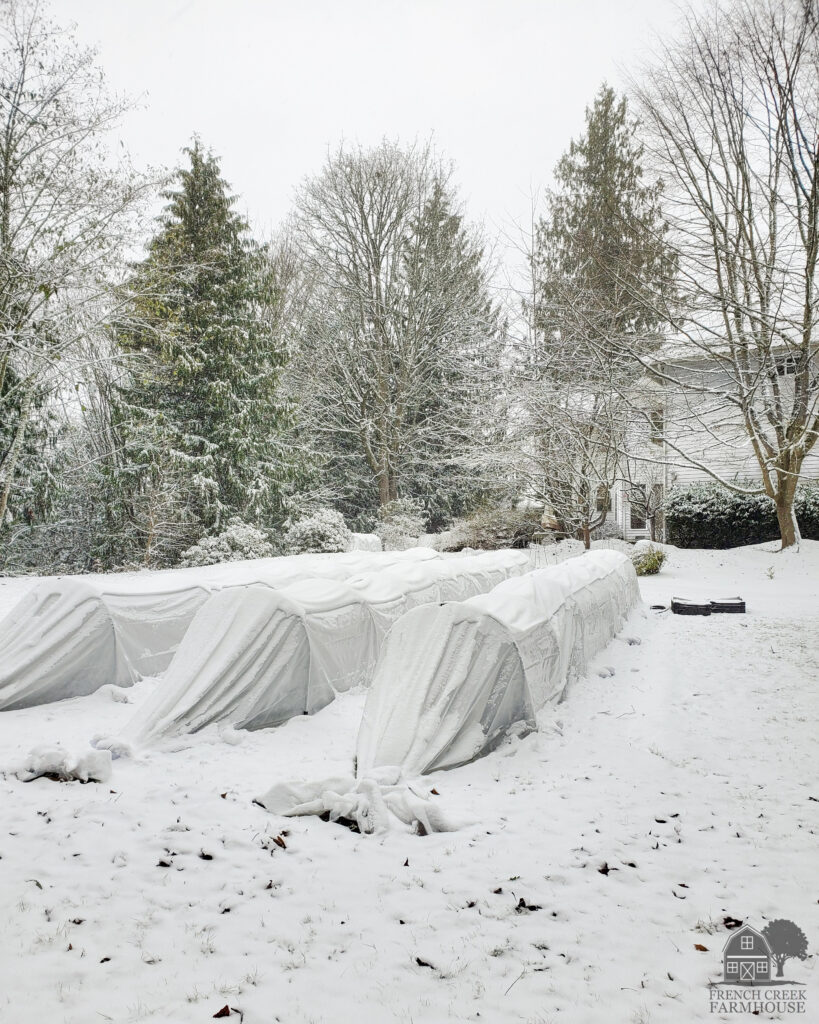
Best Practices for Using Landscape Fabric for Temperature Regulation
Here’s a simple quick-reference while you’re considering the best way to utilize landscape fabric for temperate regulation. Remember, every grower is going to have a different experience due to the crops they grow and their unique climate, so trialing the solution is the best way to find what’s going to work for you.
- In early spring, lay landscape fabric over planting rows a few weeks before planting to help warm the soil faster.
- In hot climates, consider using a lighter-colored fabric or covering the fabric with an organic mulch to prevent overheating.
- For winter protection, you can pair landscape fabric with row covers or other insulating materials to shield plants from extreme cold. (I wrote a complete guide on overwintering HERE.)
- Monitor soil temperature to ensure conditions remain within the ideal range for your crops. A simple soil thermometer can help you determine if you need to make adjustments.
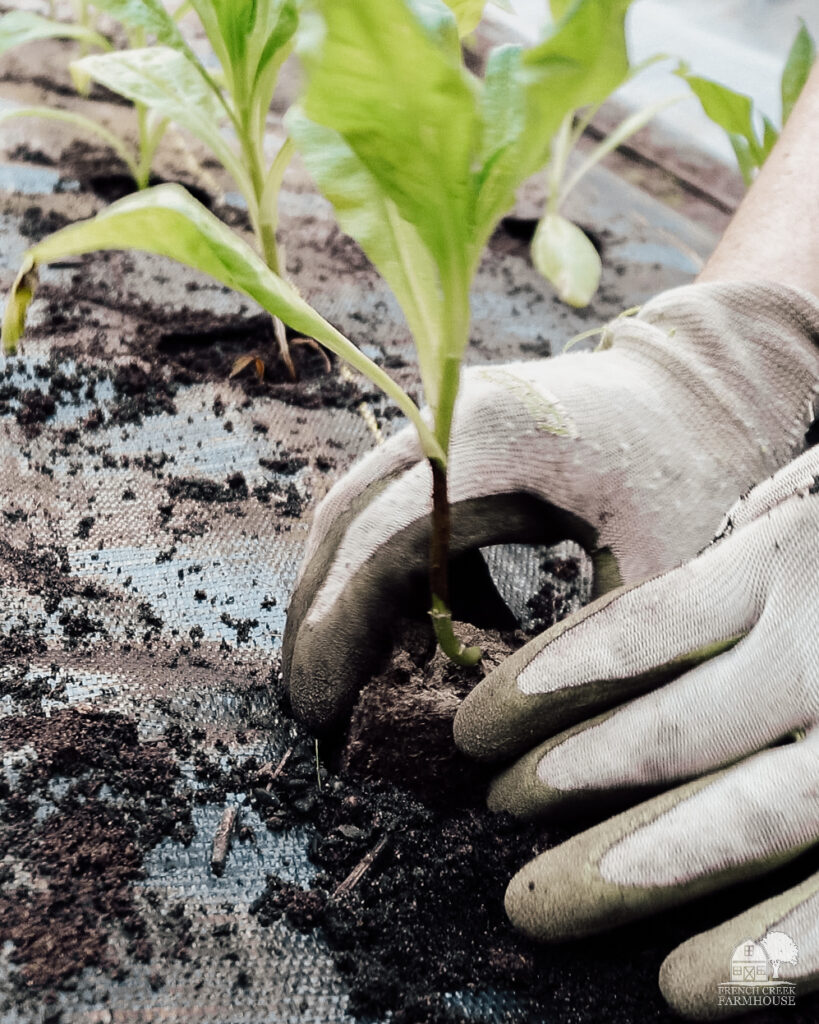
Limitations and Challenges
We’ve talked about several benefits of using landscape fabric, but to be fair, it’s not without its limitations and challenges. Every growing solutions is going to have pros and cons, and there’s no such thing as a “perfect” solution. You always have to weigh your options against your goals, and that’s why I think it’s important to discuss possible challenges to every solution.
Permeability
One common concern with landscape fabric is its permeability to water and air. While landscape fabric is designed to allow water and nutrients to penetrate the soil, we also talked about the fact that it can help with moisture retention. That means it can potentially hinder drainage in heavy rainfall or poorly drained soils, possibly leading to waterlogging and root rot.
However, I will note that as a PNW grower, we have never had this issue. And goodness knows, we experience quite a lot of rain! We utilize four-season growing practices on our farm, and it’s really just about finding the right system for you needs and climate.
Future Degradation
Another challenge is its long-term effectiveness. Over time, landscape fabric may degrade due to exposure to sunlight, temperature fluctuations, and physical wear and tear. This can diminish its weed-suppressing properties and require periodic replacement, adding to the cost and maintenance of garden beds. For that reason, I would only recommend using high-quality landscape fabric that is made to last for years.
Not Ideal for Garden Beds with Bulbs and Annuals
Moreover, landscape fabric can inhibit the growth of desirable plants if not installed and maintained properly. Its ability to block sunlight and water penetration can affect the establishment and growth of shallow-rooted plants, especially in raised beds or container gardens. And if you plan to plant a lot of annuals or bulbs, it’s not going to be the best choice for those scenarios.
Aesthetics
Some gardeners may find landscape fabric unsightly or difficult to work with, as it requires some amount of care during installation, as well as maintenance to ensure proper effectiveness. We keep our pre-burned landscape fabric folded in plastic totes when not in use. Then we just lay it back out for the growing season. This makes it very easy for us. And as for the aesthetics, we have a farm–not a botanical garden–so the efficiencies we gain from weed suppression are far more important than anything else.
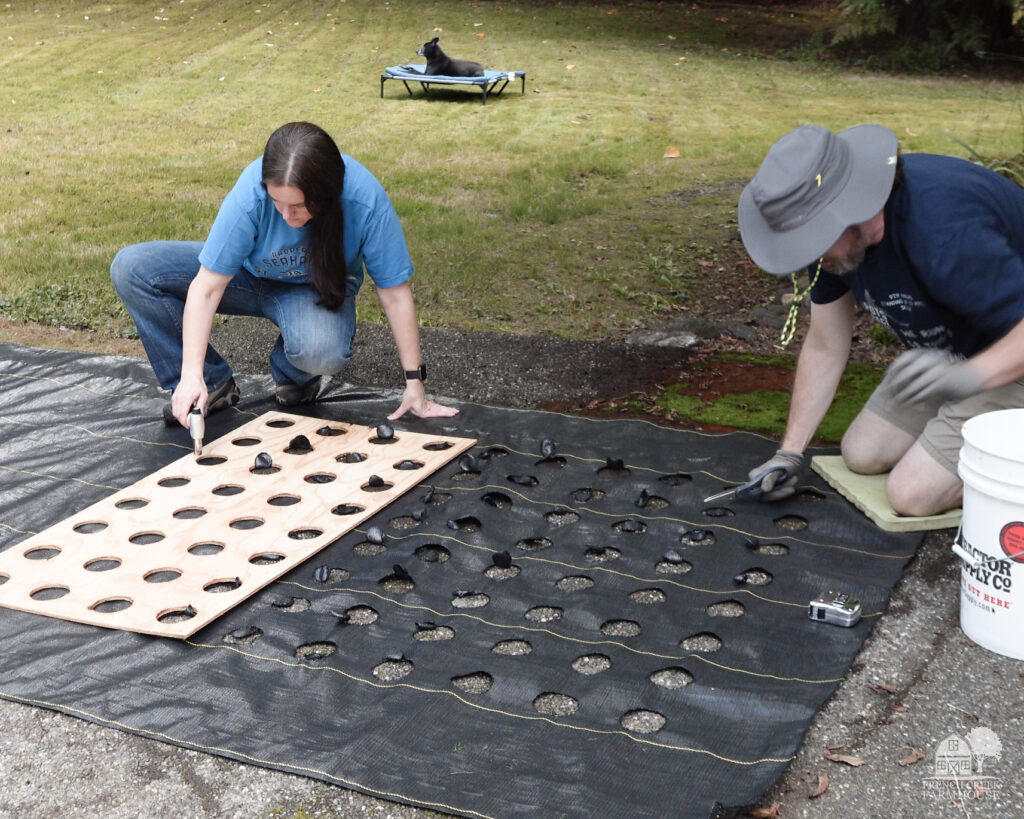
Environmental and Sustainability Considerations
When it comes to growing practices, sustainability and environmental impact are increasingly important considerations. On our farm, it’s a primary concern as we’re surrounded by the sounds and signs of “progress” constantly, but we also feel the effects of the degradation of the lands that are being consumed in that process. When we moved here, there was nothing but forests, livestock pastures, and agricultural fields for miles. Today, we are increasingly boxed in by sub-development after sub-development.
We believe that we have a responsibility to be good stewards of the land we farm. As growers, we have a responsibility to minimize our ecological footprint and adopt practices that promote meaningful and equitable relationships with our environmental.
With that goal in mind, it’s important to note that every choice has a consequence. As already stated, there is no such thing as a “perfect” solution. We just have to weigh the pros and cons to make the best choice that we can.
Plastic mulch is a good solution for our farm, but only because we were willing to invest in a quality product and commit to maintaining it so that it has a long life. It may or may not be the right choice for you, but there are other options you might consider.
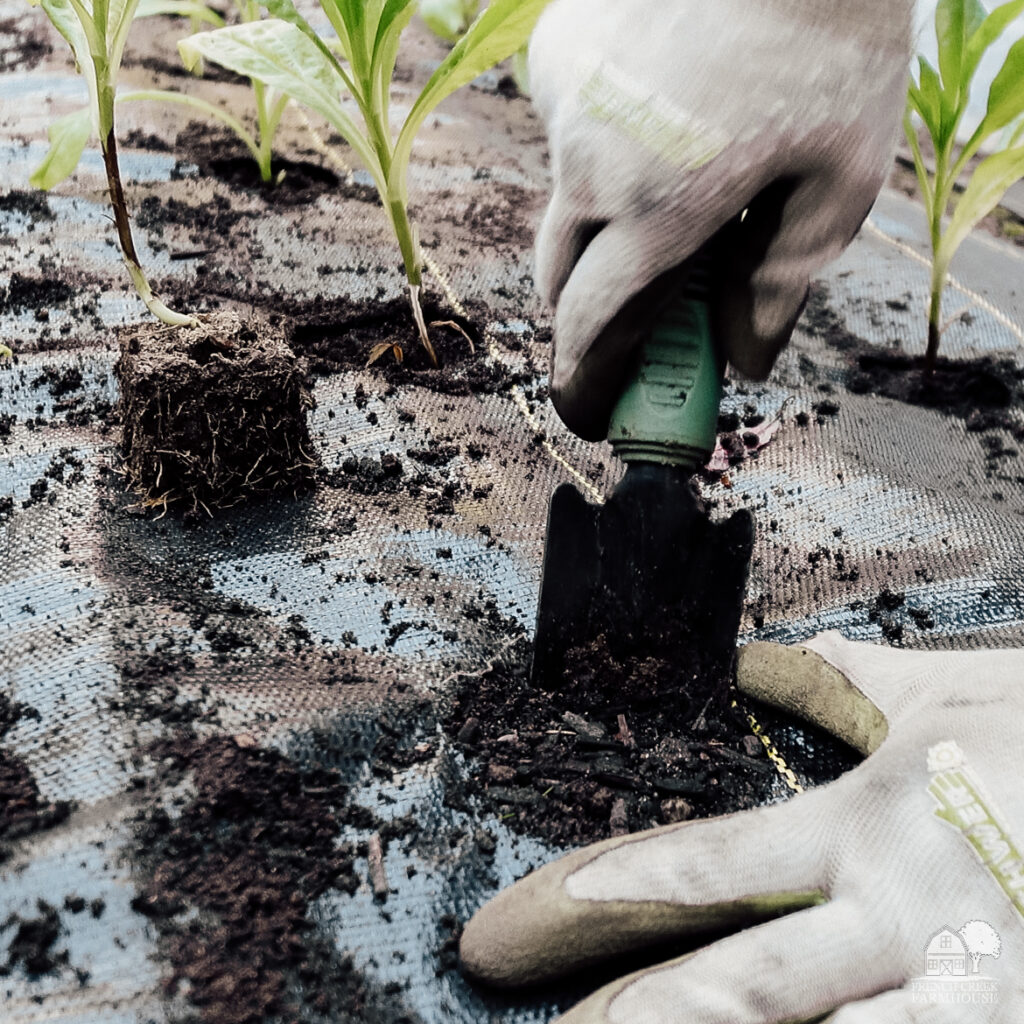
Eco-Friendly Alternatives to Landscape Fabric
Organic Mulch
One alternative to landscape fabric for weed suppression is organic mulch, such as wood chips, straw, or compost. Organic mulch not only helps suppress weeds but also improves soil health by adding organic matter and promoting microbial activity. Additionally, organic mulch decomposes over time, enriching the soil and reducing the need for frequent replacement.
We make an annual investment into top quality mulch. All of our beds receive 2-3″ of organic compost at the beginning of the growing season. This makes a tremendous difference to our soil health given that we farm small acreage where crop rotation is not possible. We also compost on our own and use that material to amend planting as needed.
Living Mulch and Cover Crops
Another eco-friendly alternative is using cover crops or living mulches to suppress weeds naturally. Cover crops, such as clover or buckwheat, can be sown between planting rows to out-compete weeds and improve soil fertility. Similarly, living mulches, such as low-growing ground covers or perennial herbs, can provide effective weed suppression while enhancing biodiversity and ecosystem resilience.
There are pros and cons to living mulches, and it might not be the right option for the crops you grow. But there are many growers who swear by this solution. The bottom line is to find the solution that works for your farm’s/garden’s needs while being mindful of the impact it has on the environment.
Biodegradable BioPlastic Mulch
I’ve heard a lot of talk recently about a biodegradable product called Bio360, but everyone I know who has used it has had major regrets. Most people try it out because of their environmental concerns and the fact that it’s a less costly product. However, keep in mind that you’ll need to buy it every year, so it’s not cheaper for very long. Plus, the product is designed to biodegrade in 4-6 months. If you have a long growing season (as we do), this can be problematic. It also seems to be quite flimsy and tears easily. This means it ends up shredded all over your beds rather than staying put and doing its job. I cannot recommend this product, even though I like the idea of it being biodegradable and compostable.
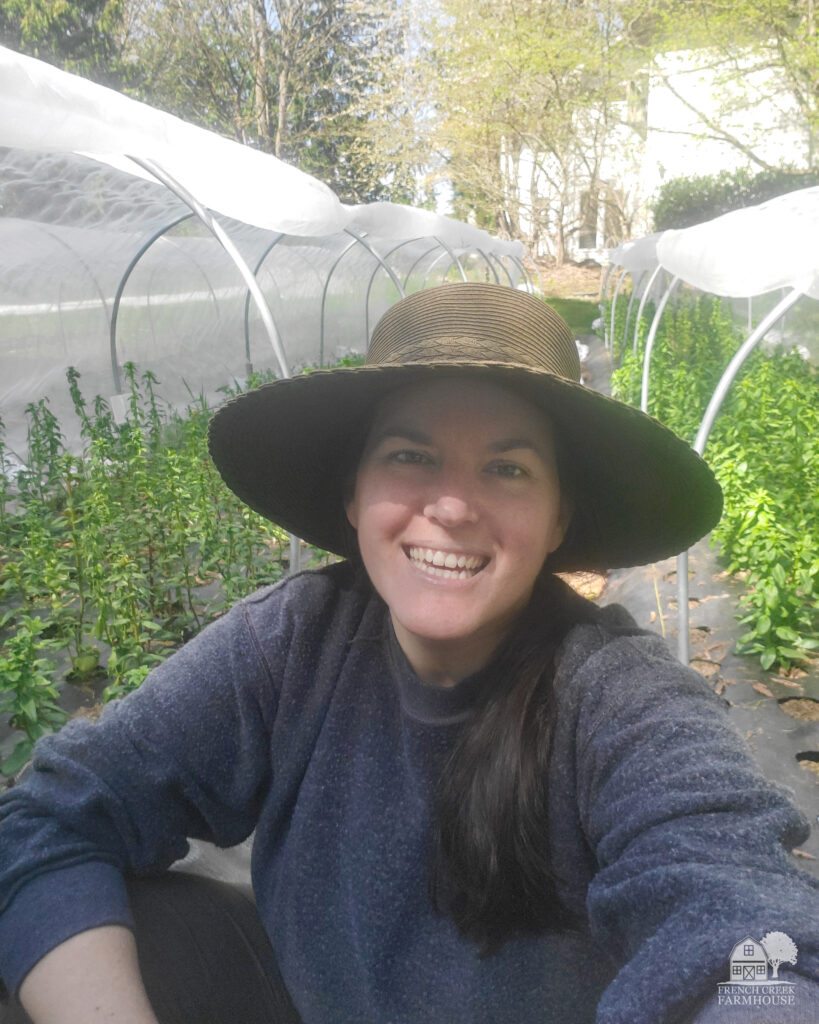
The Landscape Fabric We Use On Our Farm
We use DeWitt Sunbelt 3.2 ounce woven ground cover, and it is the only landscape fabric I would recommend. It’s also the highest quality product that DeWitt offers, so you can be sure it will last a long time. The 3.2-ounce polypropylene is UV stabilized to withstand direct sunlight, helping it last longer. And the fabric is striped every 12-inches to make it easy to align your plantings.
If you plan on burning planting holes into the fabric, this is also the best solution for you. Slightly cheaper products exist on the market, and similar products from off-name sellers, but they tend to melt when you try to burn them. Take my word for it–it’s not worth wasting your money on a product you will only regret. There are places to be frugal in farming, but for the sake of your sanity, this isn’t one of them.
If one of your goals is to grow more and manage your time, landscape fabric might just be the solution you need. The time savings and improvements to your crops are only part of the benefits package. You also get the added advantages of season extension, water conservation, and improvements to soil health to boot. This year might just be your best ever with the addition of some top quality landscape fabric! Happy growing, friends!
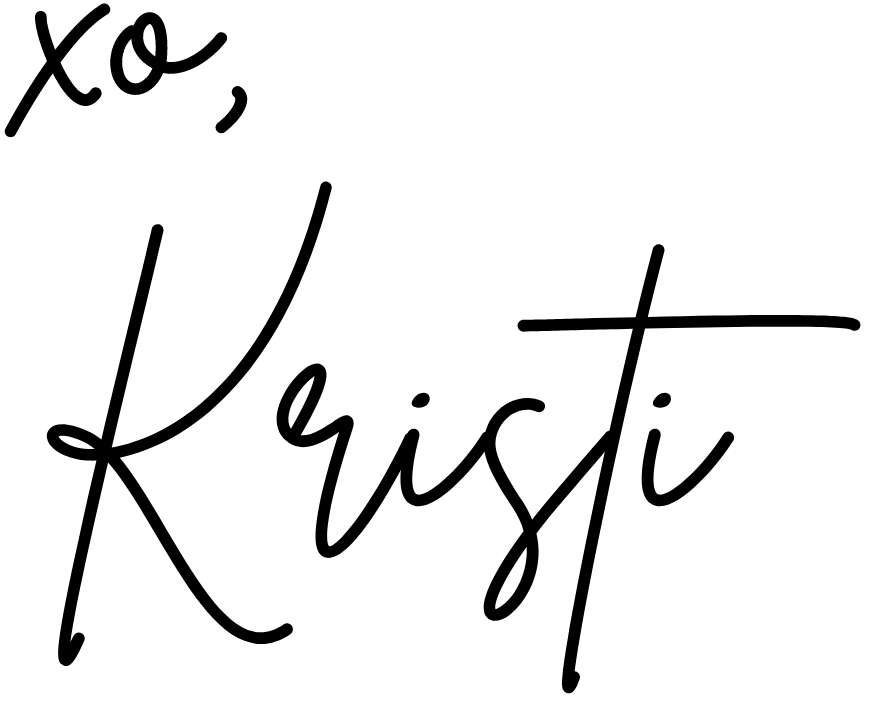
Ready to dig in and grow something beautiful?
Get my Free Garden journal
Let’s be gardening buddies! Sign up to join our community, and get your free printable PDF Garden Journal. This is so good!

